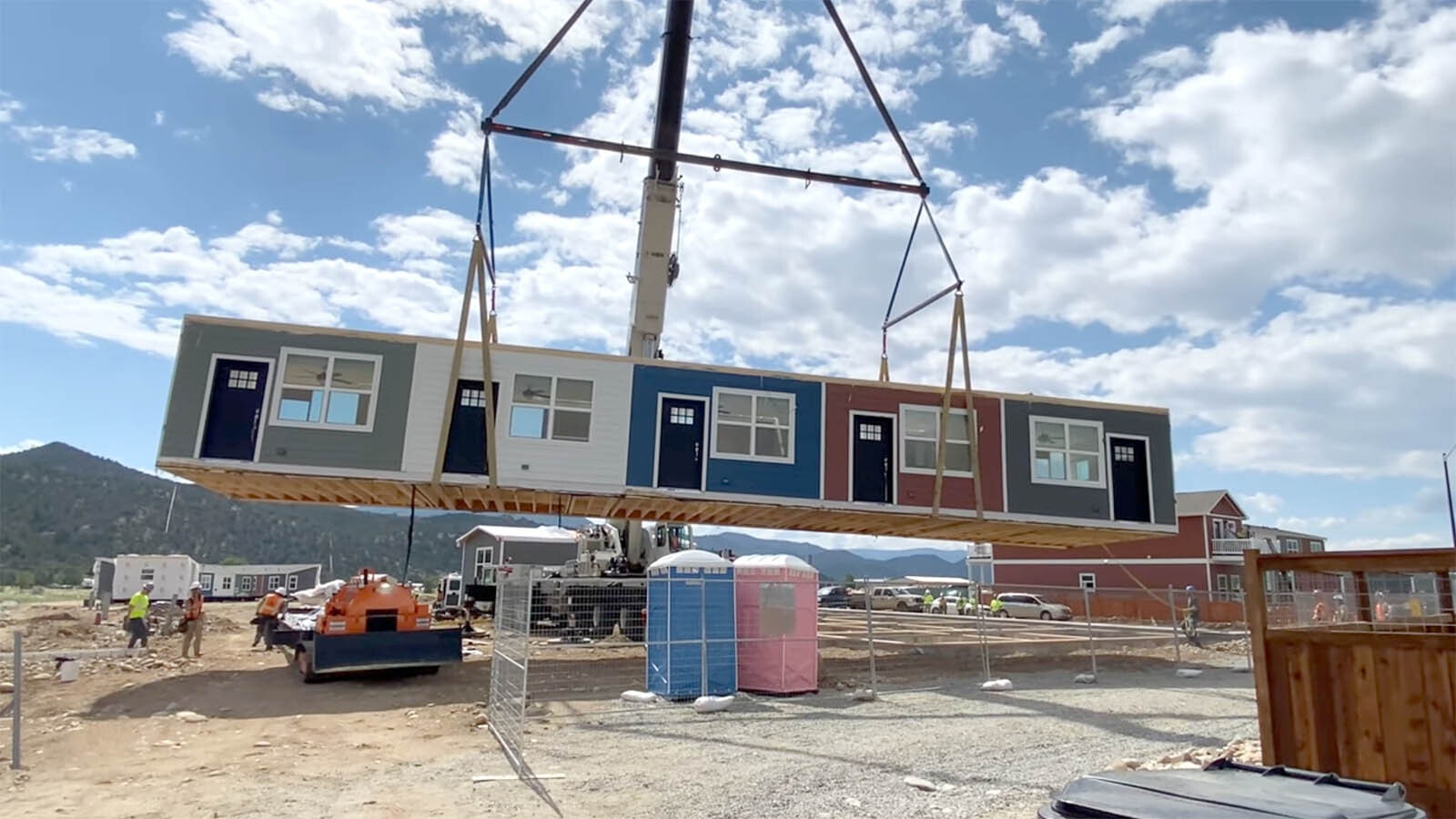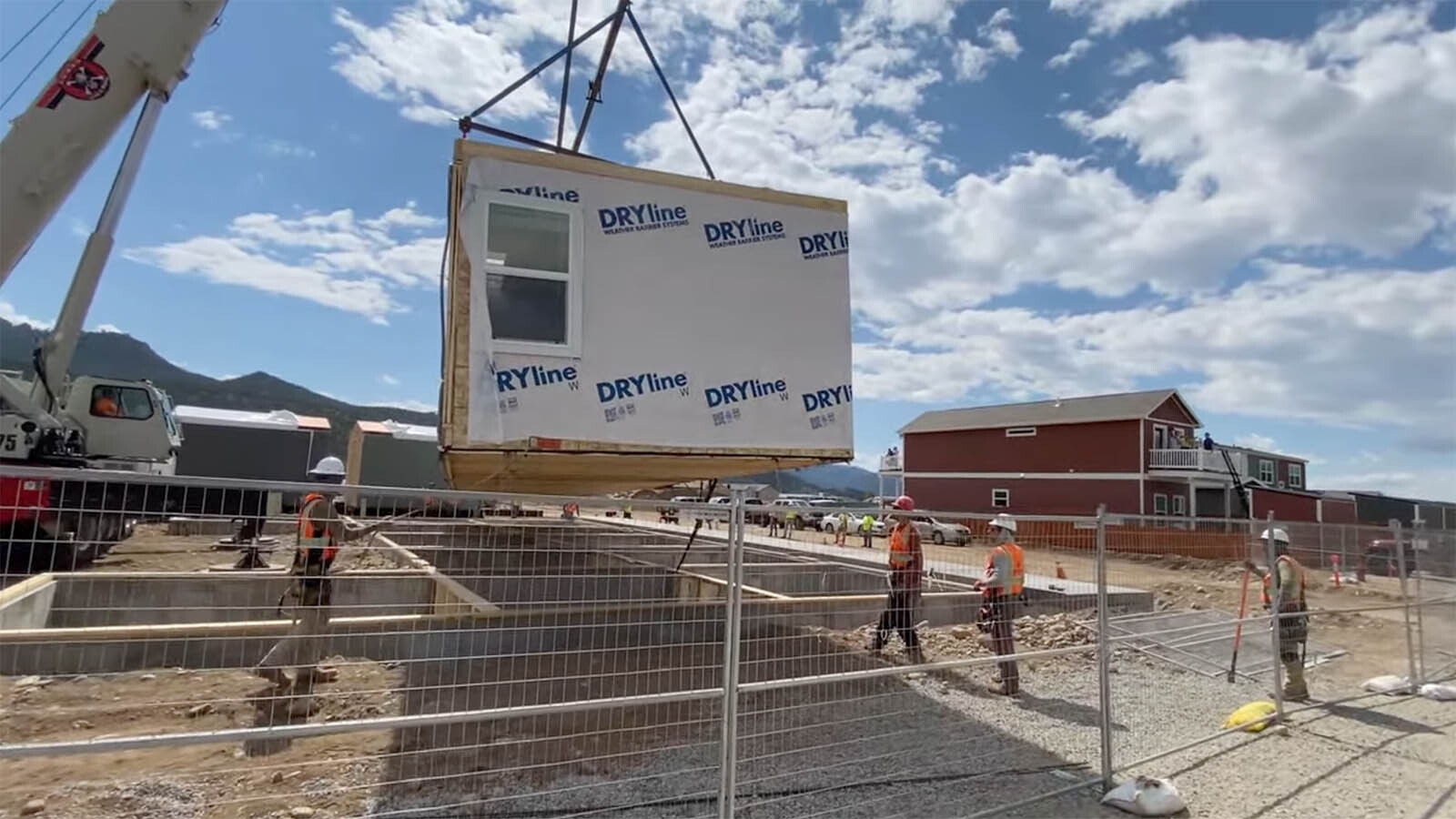Up until 25 years ago, housing markets seemed to be in sync with supply and demand. That’s the trend economist Scott Beaulier, who is the H.A. (Dave) True Family Dean of Business at the University of Wyoming, has seen.
Demand would go up with a corresponding rise in prices, and then more houses would get built. Prices would then start to ease off as supply came in and quenched the market’s thirst.
“If you look at a long-term, controlling for inflation, trend of housing prices nationally for about 50 years, they were largely flat or earning basically a normal rate of return,” he said. “So, you’d have a bump in housing, and then prices came right back down. That is supply responding to demand. And that is how markets should work is there are supply responses.”
But 25 years ago, Beaulier has seen housing markets seemingly untether from that expected pattern. Instead, prices started to rise, and new supply didn’t quench the thirst. Prices just continued to go up and up and up.
In Wyoming, meanwhile, there’s a housing shortage of between 20,700 to 38,600 housing units across the state, based on a housing needs assessment commissioned by the Wyoming Community Development Authority last year.
The problem has become so bad, economic developers are saying it’s hampering their efforts to attract new businesses and workforce to the state.
“I live in a great place,” Laramie Chamber Business Alliance CEO and President Brad Enzi said. “I have a great organization. I have a great board. What I don’t have is places to put people when we can recruit.”
A $900 Million Opportunity In Laramie
Enzi takes a decidedly economic development approach to looking at this problem.
“Let’s all just pretend for a second that everybody’s going to be happy in a 1,000 square foot house,” he said. “That’s 3 million square feet of housing.”
If these 1,000-square-feet homes could be built for $300 a square foot on average — no land included, just vertical construction — that makes it a $900 million economic development opportunity.
“So the challenge that we face in Laramie is, how are we going to go and attract $900 million to be invested in our community?” he said.
And that size of a development ought to be attractive to developers. The “juice” as some economic developers put it, should be worth the “squeeze.”
But there’s a maze of obstacles developers who want to build affordable homes face.
One of the obstacles Enzi has seen are community attitudes.
“Everybody wants affordable housing,” he said. “Do you know where they don’t want it in Wyoming? Go ahead and say it loud, let’s be proud about it. Yeah, not in my backyard.”
This “NIMBY” mentality — Not In My Backyard — is holding back opportunities.
“We have to get over some of these things,” Enzi said. “Because we can’t say, on one hand, we want affordable housing, or we want housing, or we want our economy to grow, but in the next sentence say, but not next to me.”
Studies, meanwhile, have shown that affordable homes do not lower the prices of surrounding homes, as people often fear, University of Wyoming Acting Assistant Director Mike Martin said. A rising tide lifts all boats, and that’s what studies are showing happens when affordable homes are built in an area.
Modular Homes Fight Outdated Stigma
One of the other obstacles is past experiences, which have been codified into many municipality and county planning and development laws. The trouble is, those laws aren’t keeping up with changes.
Take modular homes for an example. Both modular and manufactured homes have long had a stigma attached to them, because, in the past, some were poorly made.
“But those times are over,” Martin said. Yet, he added, “In my role on the Wyoming Community Development Authority Board, we have a program in particular that won’t allow modular houses to be financed.”
That’s related to the perceived quality of such homes. And it’s still in place, even though the quality of these types of homes is different today.
“There is a difference between a manufactured home and a modular building,” Elske Architecture Owner Ansley Mouw added, suggesting that the quality is dramatically better these days. “And you actually have 80% cost material savings, because they’re so much more efficient in reusing that scrap lumber for that line.”
She’s found it difficult, though, to work with many municipalities. Some of them don’t understand that to ensure cost-savings are realized, the design process has to be integrated into the discussions, from beginning to end.
In Kemmerer, where multiple large energy-related projects promise to bring more than 12,000 workers to build out, modular housing is being looked to as an answer to the question of where all those workers will live.

Better Pipes Aren’t Allowed
There are also a host of rules that sometimes don’t fit newer materials, and evolving approaches that can cut costs, Moyes Family Homes Founder and President Jason Moyes said.
“There’s a new pipe out, well it’s not new pipe, it’s old pipe that’s been tweaked a little bit, that has a much lower cost,” he said. “It has a longer life. It has a 100-year lifespan, and I just turned 50, so I’ll be seeing the end of that project probably.”
These new pipes have a lot of advantages that the old-style pipes that are on the list of approved materials don’t have.
“If it freezes, it doesn’t break,” Moyes said. “It expands and then contracts back to size. It can be spliced and fixed in a much — so the initial install is faster and cheaper. The maintenance of it, the repairs are cheaper and faster.”
Despite that, Moyes said he believes there are communities where the pipes wouldn’t even be a “conversation starter.”
“And I understand that, but those conversations need to be had,” he said. Because there are ways to make some of those infrastructure upgrades for the future in a much more efficient manner.”
But It’s Always Been This Way
Moyes said when he’s asked about different rules, usually he gets the answer that this is how it’s always been.
“We don’t do that to commercial, but we do that to housing,” he said. “We say, ‘It has to look like this. It has to be shaped like this. But when you drill down to why, why are your setbacks 7 feet? Why are they not 5 feet? The answer oftentimes is, ‘that’s how it’s been when I got here.’”
Moyes would like to see some of those things tweaked to allow new opportunities, new ways of approaching the affordable housing crisis.
“Can we justify all of the things (in the code books)?” he asked. “Are there things we can tweak? I think that would be a big step in bridging some of the gaps we have.”
Martin said he hopes to provide communities with a strategy toolbox that they can use to increase their housing stock over time.
The challenges, he added, are something of a chicken-egg problem.
“How do we attract developers?” He said. “How do we attract builders to come? How do we keep the labor here? These are all huge questions, and I think that the answers will at least start to be painted in the strategy plan, when it’s released.”
Martin said he anticipates release of the strategic plan in time for the upcoming legislative session.
Contact Renee Jean at renee@cowboystatedaily.com
Renée Jean can be reached at renee@cowboystatedaily.com.





